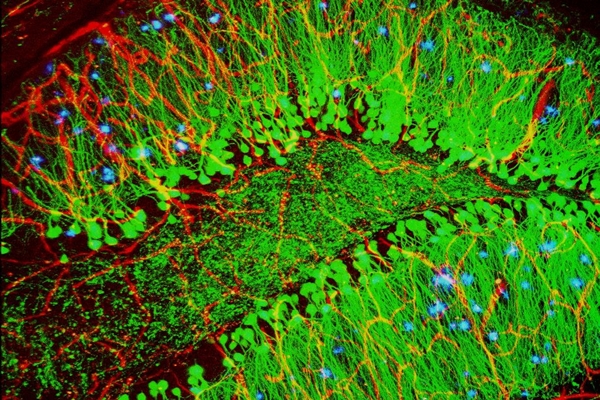22 June 2017. Researchers in Europe designed antibodies, like those in the immune system, to attack protein deposits in the brain associated with Alzheimer’s disease. The team from the lab of chemistry professor Michele Vendruscolo at University of Cambridge in the U.K. describes its findings in yesterday’s issue of the journal Science Advances.
The Cambridge researchers, with colleagues from ETH Zurich in Switzerland and Lund University in Sweden, are seeking faster and more effective ways to find treatments for Alzheimer’s disease and other neurological disorders characterized by aberrant proteins. Alzheimer’s disease is a progressive neurodegenerative condition affecting growing numbers of older people worldwide. People with Alzheimer’s disease often have deposits of abnormal substances in spaces between brain cells, known as amyloid-beta proteins, as well as misfolded tangles of proteins inside brain cells known as tau.
Preventing these substances from building-up in the brain is a promising strategy for prevention or treatment of Alzheimer’s, but finding therapies that get results is elusive, due in large part to the complexity of the process that amyloid-beta and tau proteins accumulate. Most current drug discovery methods, such as screening large databases of compounds, is haphazard and so far not providing satisfactory results.
Vendruscolo’s lab takes a more direct approach to drug discovery, using computational methods to design drugs with the desired capabilities and features to achieve the desired outcomes, in this case prevent amyloid-beta proteins from accumulating in the brain. The team, led by Francesco Aprile, a postdoctoral research fellow and first author of the paper, designed an antibody like those in the immune system that attack specific invading substances. The researchers started with a clean slate, working largely from the sequence of amino acids in amyloid-beta proteins.
But because of the complexity of proteins building-up in the brain, the antibody had to meet demanding conditions. The team designed the antibody to address amyloid-beta proteins in the early stage of accumulation as they formed into oligomers, or small aggregates of amyloid-beta, before producing toxins. The researchers also targeted specific epitopes, or binding regions of the protein. To find these targets, the antibody scans the amino acids in the amyloid-beta proteins until the matching epitope is found.
In addition, the antibody needed to be small in size, which serves two purposes. First, the small size makes it easier to cross the blood-brain barrier, a filtering mechanism in the brain and spinal cord to prevent toxins in the blood from affecting the central nervous system, but also prevents many drugs from treating neurological diseases. In making the antibody smaller, the team also removed components in the chemistry that trigger inflammation common to immune reactions. These inflammatory responses up to now made it difficult to use antibodies to treat Alzheimer’s disease.
The specific targeting and small size offer yet another advantage. “Since the designed antibodies can selectively target oligomers, which are present in low numbers relative to the total amounts of amyloid-beta,” says Aprile in a university statement, “we expect them to be effective even when administered in low doses.”
The team tested 2 antibodies designed to address initial and then secondary accumulation of amyloid-beta proteins. The lab tests, which included giving the proteins to roundworms that share some genetic characteristics with mammals, show the antibodies stop the over-expression of amyloid-beta proteins.
“Developing antibody-based therapies is costly and time-consuming,” notes Vendruscolo, “but if we can find better and cheaper ways of producing antibodies, we would increase the chances of finding treatments for patients. Making them by design can create opportunities to achieve this goal.”
More from Science & Enterprise:
- LEDs Shown to Reduce Alzheimer’s Brain Plaques
- Trial to Test Radio Waves to Treat Alzheimer’s
- Safety, Effects Shown in Drug Clearing Alzheimer’s Peptides
- Trial Shows Antibody Slows Alzheimer’s Cognitive Decline
- FDA Giving Fast-Track Review to Alzheimer’s Candidate
* * *


 RSS - Posts
RSS - Posts
[…] Computer-Designed Antibodies Target Alzheimer’s Proteins […]
[…] Computer-Designed Antibodies Target Alzheimer’s Proteins […]